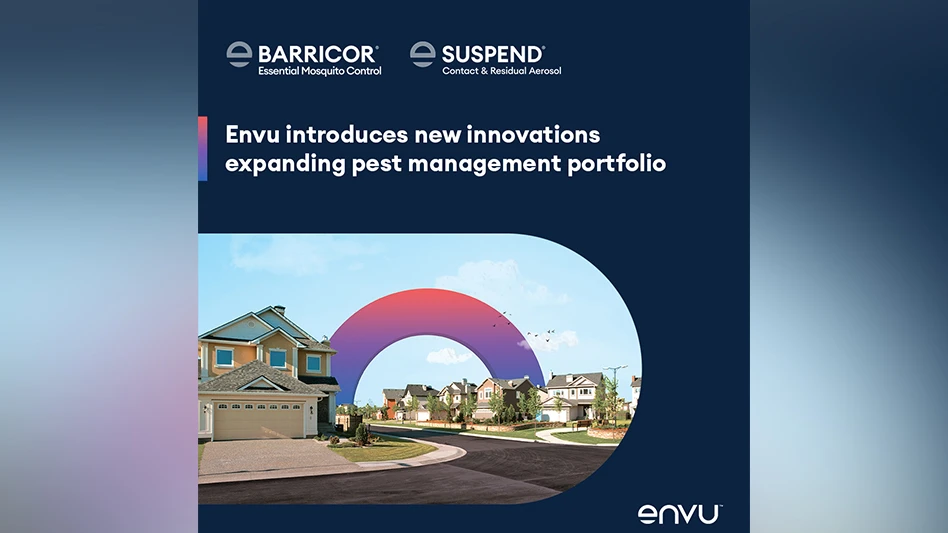
When PCT and Readex fielded this year’s State of the Rodent Market survey, we didn’t uncover huge fluctuations in the trends we began tracking through last year’s survey. But it is clear that rodent populations continue to grow. In fact, in certain pockets around the country, PMPs are reporting out-of-the-ordinary activity in rodent populations, with resultant spikes in business.
Take Phyllis Farenga, for example. Farenga says that 75 percent of her business is rodent control (this compares to an average of 14 percent among PMPs surveyed nationwide). The proliferation of pocket mice, pack rats, ground squirrels and other rodents in Southern Arizona has contributed to the tripling of her customer base over the past three years. In fact, Pest-Techs is so saturated with business that Farenga often refers new inquiries to other pest management companies in the area.
“We can hardly keep up with the growing rodent populations here in the foothills,” she says, citing the experience of a customer who caught 170 ground squirrels in one week on his 2-acre property. “We can’t control the environmental conditions that are contributing to this rapid rise — declining predator populations and changing weather patterns, for example — and so we are left to manage infestations property by property. Rats are eating through roofs, nesting in couches and finding a dozen other ways to challenge us. If I’m late to an account by even a few days, the rodents take over again. And just as we begin to make headway eliminating one pest, it seems that another species moves in.”
The Tampa Bay area is seeing heavy rodent activity as well. “We expect to, at a minimum, double our rodent work this year, due to a couple of factors,” shares Vicki Hutto of VIP Pest Control in Wesley Chapel, Fla. “First, heavy rains have left our region extremely wet — to the extent that you’ll see areas flooded with three or four feet of standing water. Second, commercial and residential construction is booming here. Rodents are being displaced and taking up residence in homes and businesses that had been rodent-free.”
In fact, when asked whether they’ve seen an increase or a decline in rodent infestations over the past year, 60 percent of PMPs reported increases of at least one species in their markets. Only 11 percent reported a decline in one or more species. What does this mean for your business? Potential growth opportunities.
Many PMPs are already reaping the rewards of growing rodent populations, with 44.5 percent reporting that rodent control has become a more significant portion of their business in the past five years (only 5 percent reported it has become less significant). More than half (55 percent) expect rodent revenue to grow in the next year, while only 3 percent look for a decline. Fifteen percent consider rodent control their largest growth market.
If you had asked me 10 years ago, I would have said spring and summer were our busy seasons, but today, it’s year-round. We used to get breaks, but not anymore.” — PMP Phyllis FarengaWhere — and When — Rodent Control Is Needed Most
Nearly all PMPs (95 percent) who provide rodent control serve the residential market, while four out of five (83 percent) serve the commercial market. Only a fourth (27 percent) serve government customers. Which market represents the largest chunk of revenue? Residential, 60 percent of respondents say.
Fall and winter continue to be the busiest seasons for rodents, with 44 percent of PMPs saying fall brings them the most rodent business, and 22 percent choosing winter. Nearly a fifth (18 percent) report no seasonal difference. “If you had asked me 10 years ago, I would have said spring and summer were our busy seasons, but today, it’s year-round,” shares Farenga. “We used to get breaks, but not anymore.”
Another warm-climate PMP, Mike Maggard of Dancing Frog Pest Management in Dallas/Fort Worth, agrees. “Rodent control has become a year-round business for us. It seems like a lot of markets are looking at year-round seasons,” he says.
Top Troublemakers: House Mouse, Norway and Roof RatsGiving house mice a run for the title of “most problematic species,” Norway rats climbed a notable 11 percent this year, earning the distinction of being labeled “problematic” by 51 percent of PMPs, as compared to 40 percent in 2014. Nevertheless, house mice continue to be the reigning champs in this arena, inspiring 73 percent of PMPs to describe them as problematic (a 4-percent jump from last year) and representing the largest number of service calls for nearly half of PMPs (48 percent). Roof rats take the No. 3 “problematic” spot at 40 percent, up 3 percent since 2014.


It’s not surprising, then, that 88 percent of PMPs say that the number of mouse infestations has either increased or remained the same over the past year. Norway and roof rats weigh in at 74 and 63 percent, respectively.
Gaining Control of InfestationsPest management professionals report using a broad range of products and services to control rodents. Nearly all (92 percent) use bait stations at one time or another, with bait blocks (80 percent), glue traps (75 percent) and snap traps (74 percent) close behind in popularity. Exclusion services are provided by just more than half of PMPs (59 percent), but those who do offer them swear by them.
“Doing an inspection to find out where the openings are, and then making sure that those openings are sealed up, is critical to managing rodents,” says Brett Schulte of Professional Termite & Pest Control in Omaha, Neb. “We do the exclusion work ourselves and in many cases find that this effort alone takes care of the problem.”
Brad Parker agrees that exclusion is an important step. His company, Oklahoma-based Parker Pest Control, follows a three-step treatment protocol: “First, we ask for access to the attic, where we place baits as long as there’s no possibility of children or pets getting access to them. Then we plug every hole we can find with a copper mesh material that’s impervious to chewing. And finally, we set traps. We generally use multi-catch traps, glue boards and snap traps. If the home is in the country, sometimes we’ll place tamper-resistant bait stations outdoors to keep rodents out. If the customer has children or pets, though, we use glue boards in place of bait.”
The secret to effective trapping, adds Parker, is to overwhelm the rodents. He places traps every 10 to 15 feet, and it’s not unusual for him to place as many as 50 traps in a location. Maggard, who shares Parker’s philosophy, calls the approach “shock and awe.”
“I generally don’t set out fewer than a dozen traps at a time,” he says. “If I do that, I can generally get all of the rodents, or nearly all of them, in the first night.”

That’s after doing some thoughtful prebaiting, he adds. Maggard pays attention to what the rodents have been feeding on in the location, and he uses those same foods to lure the rodents to the prebaited traps. “I’ve used everything from pistachios and pecans to sunflower seeds, tomatoes, macaroni-and-cheese, and dog food,” he says. “Sometimes I use a little sunflower seed butter or oil with two or three sunflower seeds — just enough to give them a taste but keep them hungry so they come back when the traps are set.”
Almost two-thirds (63 percent) of PMPs offer monitoring services for rodents. Wally Melendez of A&R Pest Solutions in Vancouver, Wash., is one of them. Melendez says that monitoring helps him keep up with the Norway rats that seem to run rampant year-round in his region.
“When I do the initial inspection, I place monitors around the exterior of the building, basing the number and placement on both the size of the structure and the risk of access at any particular point,” says Melendez. “I follow up once a week for 30 days to see if we’ve effectively wiped them out. If we have, I remove the monitors; if not, we continue the treatment protocol. Generally, if the exclusion repairs we’ve recommended have been done, the problem is solved within that 30-day period.”
In regards to rodenticide usage, 69 percent of pest management professionals say they prefer block baits while 21 percent more often turn to soft baits. PMPs rotate baits on average twice a year, but not necessarily because they are experiencing resistance. In fact, fewer than a third of PMPs surveyed say they feel that rodenticide resistance is occurring.
“We don’t rotate because of resistance; we rotate because sometimes a product that worked suddenly isn’t working anymore,” says Travis Morton of Morton’s Pest Control in Huntsville, Ala. “These animals are smart, so you need to switch things up to keep them off-guard. Unless they’re really hungry, they’re wary of new food sources, like baits and traps. They’ll check them out, smelling and climbing around them, but only the hungry ones will eat.”
How do you keep them hungry? Talk with your customers about sanitation, Morton advises. “If rodents are getting all the food they need from dirty dishes in the sink, food left on the countertop or pet food that’s not being stored just right, they’re not interested in other food sources. Until the customer cleans up the place, you can’t even begin to choose the appropriate bait. The worst part is that once rodents figure out there’s a food source inside, they just keep coming.” “At that point,” Morton adds, “you could have a whole other issue to contend with: snakes.”

WANT MORE?
Enter your email to receive our newsletters.

Explore the December 2015 Issue
Check out more from this issue and find your next story to read.
Latest from Pest Control Technology
- How to Get Rid of Odorous House Ants
- Massey Services Promotes Herndon to Director of Sales for Multi-Family Division
- NPMA Announces First Recipients of NPMA PRO Certified Credential
- Pestmaster of the Hudson Valley Acquires Catskill Animal Damage Control
- Photo Slideshow: Ant Identification Tips
- Video: Top 10 PCT Photo Contest Finalists
- UF/IFAS Study Reveals Boats as Perfect Vessels for Global Termite Spread
- Pest Control Consultants (Iowa) Earns Pinnacle Performance Award






